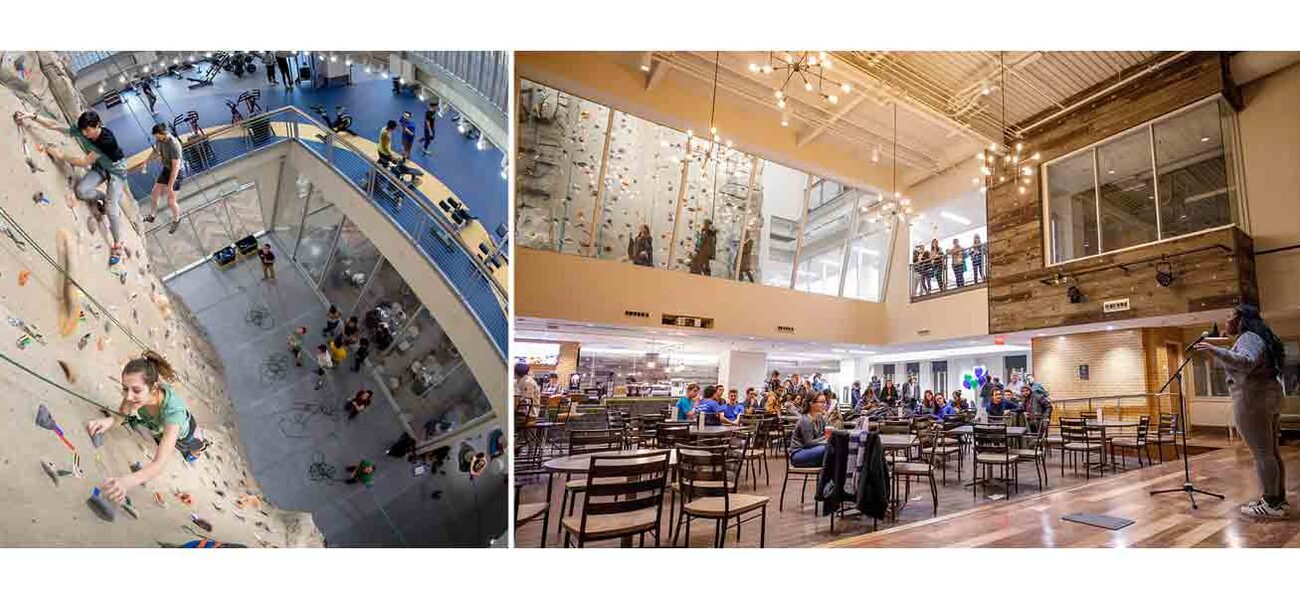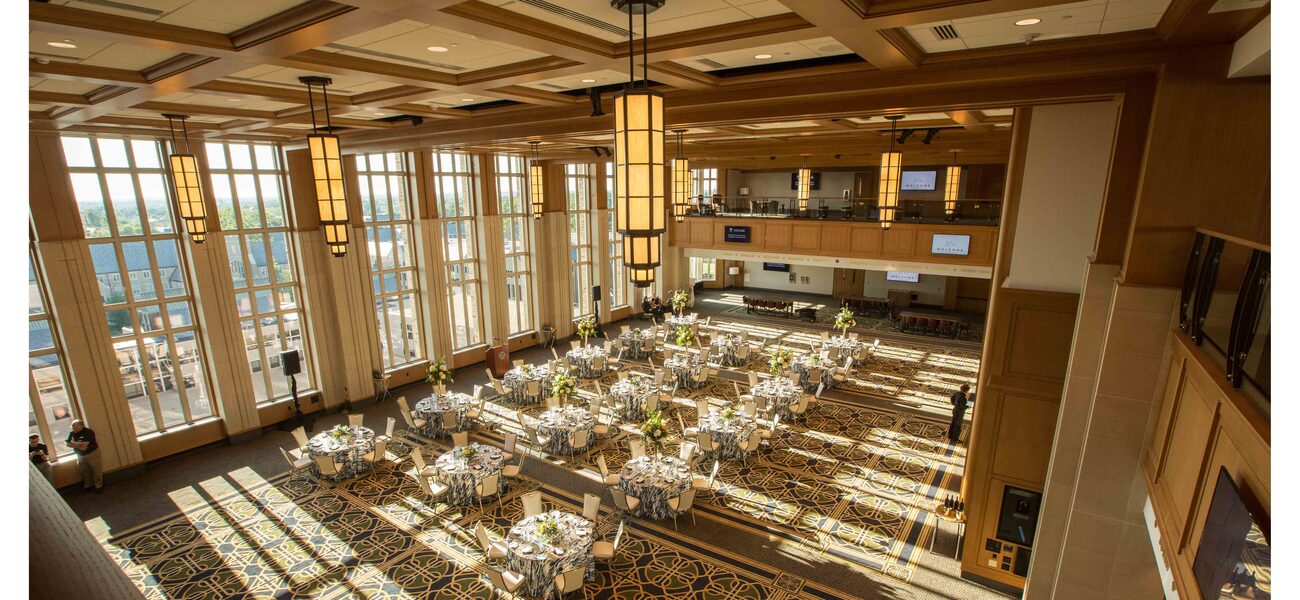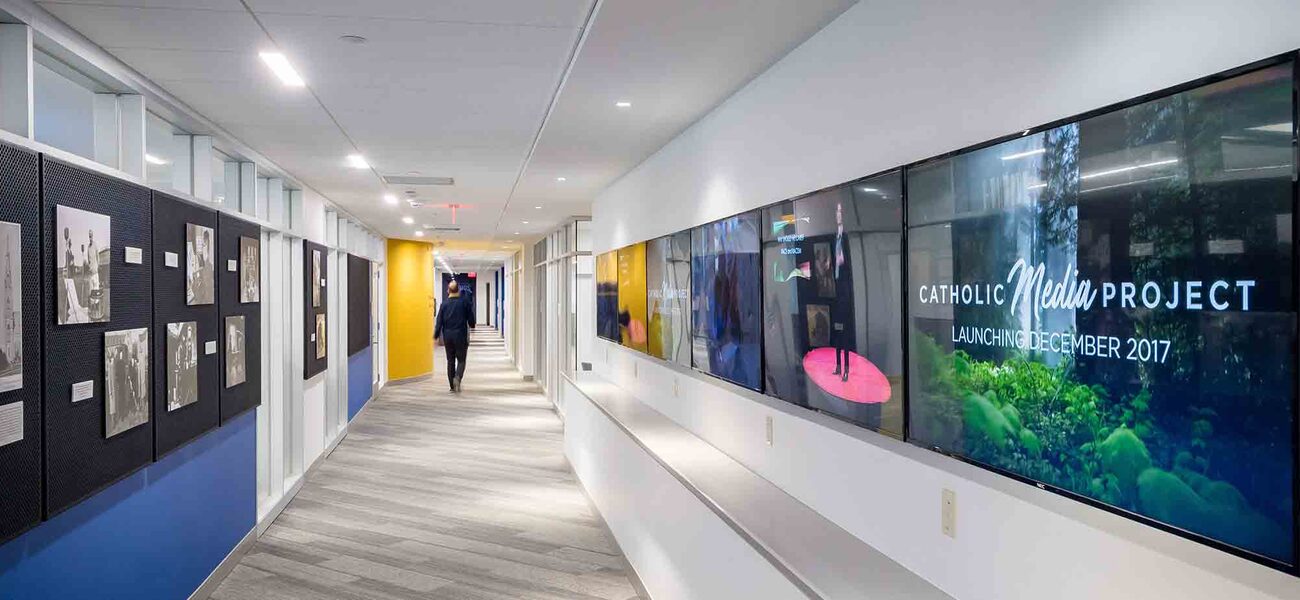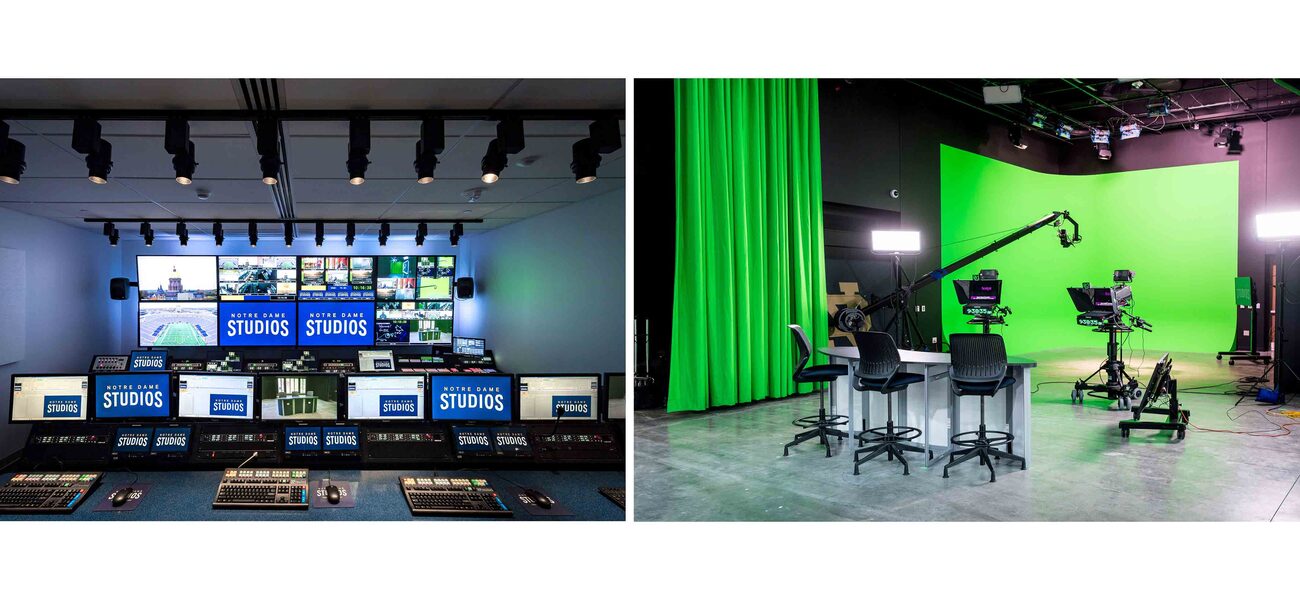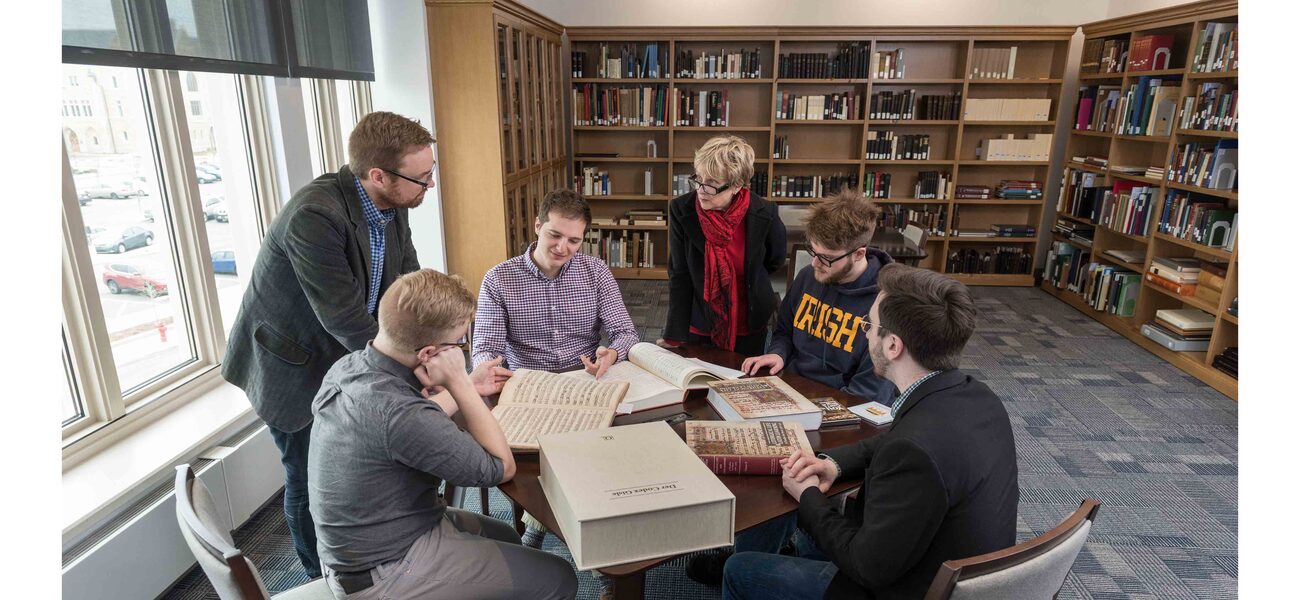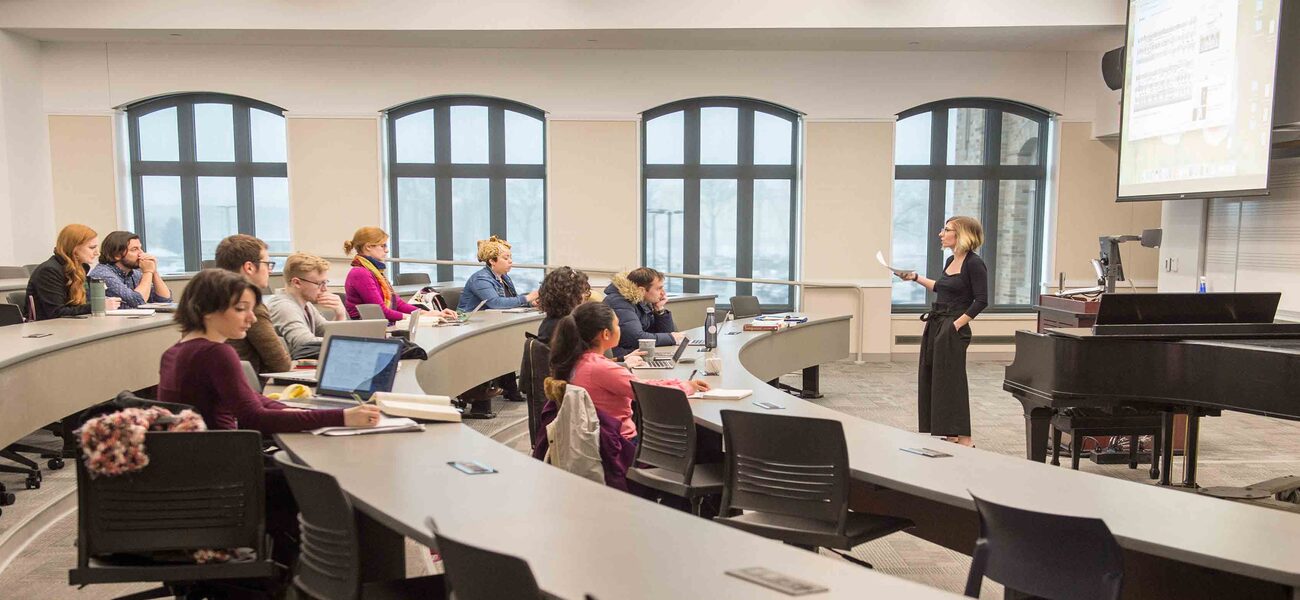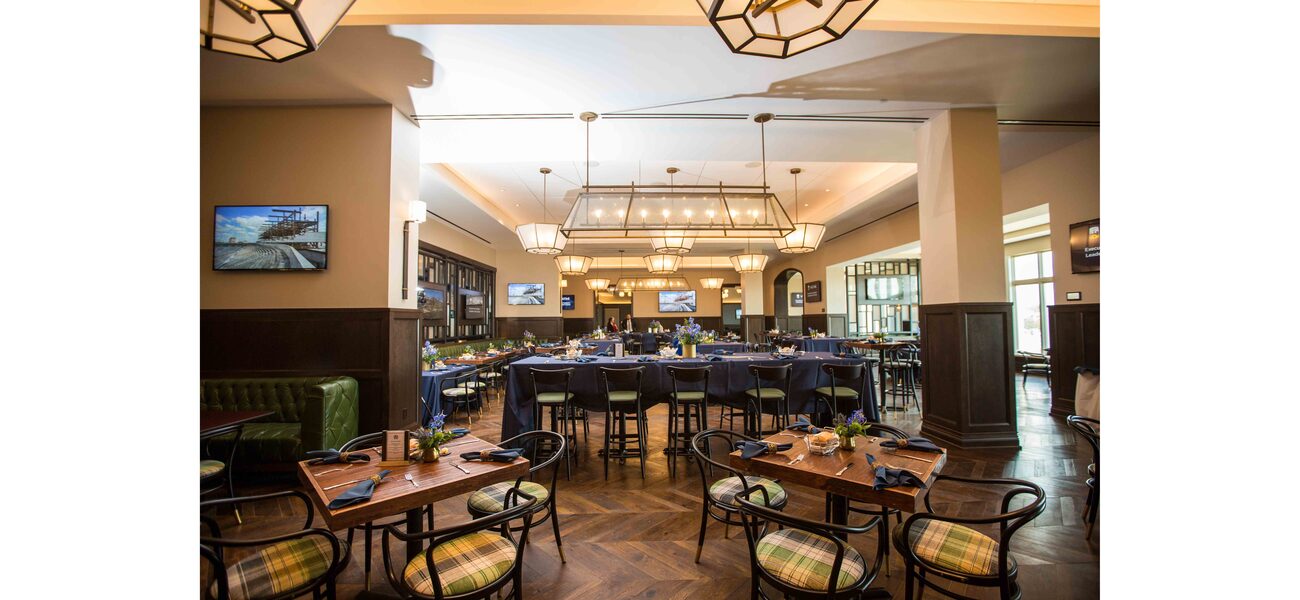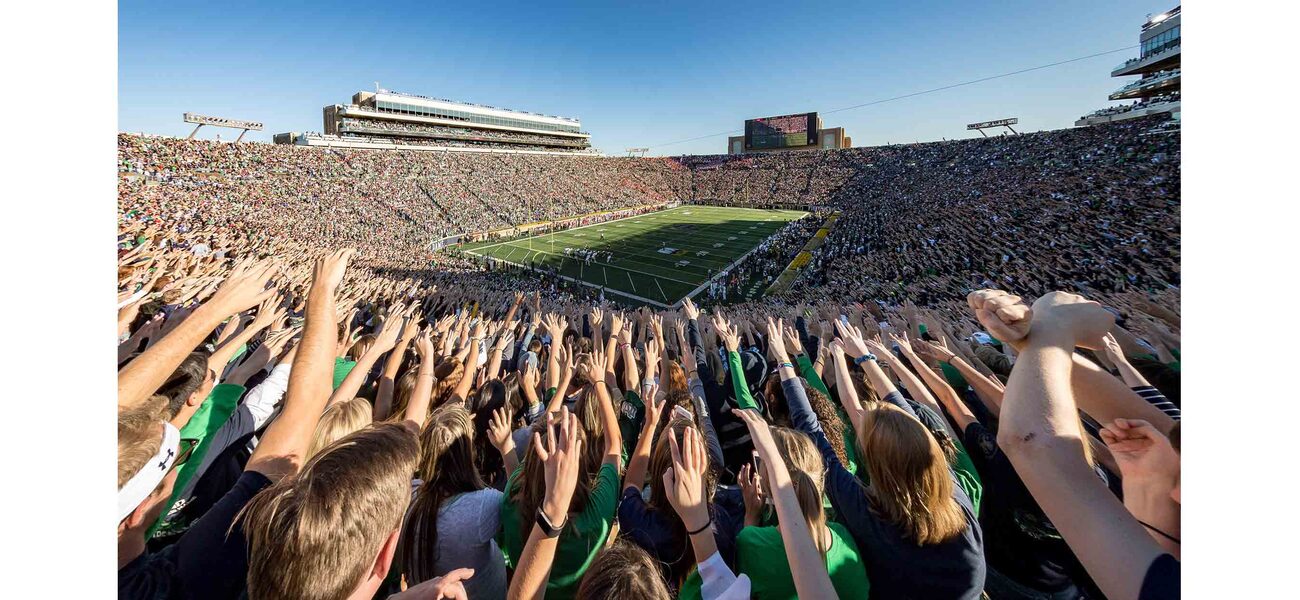The new Campus Crossroads at the University of Notre Dame is the largest construction project in the school’s 175-year history. The project, which was four years in the making, consists of three new adjacent buildings anchored to the south, east, and west sides of the iconic 87-year-old stadium. The overarching goal was to integrate academic and student life into the game day experience at a facility that previously had been used for only eight days a year—for football games and commencement. The addition of 800,000 sf of new facilities transformed it into a year-round center of athletics, academics, and student life, with classroom, research, fitness, digital media, performance, meeting, event, and hospitality space.
Upgrades to the 80,000-seat stadium itself include widening of bowl seats, new team locker rooms, postgame media areas, and renovations to the traditional tunnel entrance for the Notre Dame squad, as well as the addition of a new visiting team tunnel. High resolution video technology and improved sound systems were installed for the first time at Notre Dame stadium. On the north façade of O'Neill Hall is a new video board, which is 54 feet high and 95 feet wide, with 4.7 million physical pixels, providing superior high definition images. The new 16 mm sideline ribbon boards, measuring 3.78 feet high and 393 feet long, display key game statistics.
Additional screens include:
- 2.5 mm LED display in the North Side Schivarelli Lounge, measuring 6.3 feet high by 11.02 feet wide.
- 2.5 mm LED display in the North Side Locker Room – 7.87 feet high by 14.17 feet wide.
- 1.9 mm LED display in the North Side Interview Room – 6.30 feet high by 11.02 feet wide.
- 1.875 mm LED display in the Rex and Alice A Martin Media Center – 7.8 feet high by 12.6 feet wide.
- 2.5 mm LED display in the Duncan Student Center – 11.02 feet high by 22.05 feet wide.
The new buildings are three to four stories tall at the base of the stadium, then step back as they rise to six and nine stories. Terraces on each building, offering views of the playing field and campus, are available for community and campus use. Weathered redwood from the benches of the original stadium, with seat numbers left intact, were repurposed throughout the new facility to maintain some of the structure’s history.
O’Neill Hall on the south side of the stadium is a state-of-the-art academic facility devoted to music:
- First floor – LeBar Family Performance and Rehearsal Halls (Two-story spaces occupy the second floor, as well.)
- Third floor – Michuda Family Visiting Arts Rehearsal Hall, lecture hall, and music library
- Fourth and fifth floors – Music Department offices, teaching studios, and practice rooms
- Fourth floor – South Club hospitality space
- Sixth floor – Dedicated space for the Sacred Music program and its new PhD program
On the east side of the stadium is the Corbett Family Hall:
- First floor – The Rex and Alice Martin Digital Media Center and Notre Dame Studios
- Second floor – Department of Anthropology
- Third, fourth, and fifth floors – Department of Psychology offices, research labs, and classrooms
- Sixth floor – Mechanical storage space
- Seventh and eighth floors – Downes Club hospitality space, which serves as a 100-seat classroom on non-game days
- Ninth floor – Print media and radio facilities, as well as additional hospitality space
The Duncan Student Center is on the west side of the stadium:
- Basement – Large commissary kitchen and trucking garage to support game day and other events
- First and second floors – Student center
- First floor – Hagerty Family Café, Midfield Commons, Innovation Lounge, and a number of other new restaurants
- Second floor – Grojean Family Loft, a student media center, and climbing wall
- Third and fourth floors – The Tripp and Sheila Smith Center for Recreational Sports
- Fifth floor – Meruelo Family Career Center
- “Floor 5.5” – The 1842 Club, housed in the former press box, which is located between the 5th and 6th floors and only accessible from the stadium; it affords both indoor and outdoor seating.
- Seventh floor – Dahnke Ballroom and a new broadcast position for NBC Sports is embedded in the stadium
- Eighth floor – Rasmus Family Club
- Ninth floor – Football coaches and game management booths, University boxes, and an additional hospitality club
| Organization | Project Role |
|---|---|
|
SLAM
|
Executive Architect and Lead Architectural and Interior Designers
|
|
HOK
|
Sports Architect
|
|
RATIO Architects
|
Early Design
|
|
Workshop Architects
|
Planning and Design of Student Center
|
|
Barton Malow
|
Design Builder
|
|
BVH Engineers, Inc.
|
Mechanical Engineers
|
|
SDI
|
Structural Engineer
|
|
MCH Engineering, Inc.
|
Acousticians for Musical Performance Spaces
|
|
Champalimaud
|
Interior Design of South Club, University Suites, and Ninth Floor Clubs
|
|
ANC
|
Video and Ribbon Boards
|
|
WJHW Inc.
|
Technology & Acoustics
|
|
Musco Lighting
|
Sports Lighting
|


